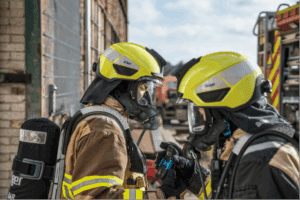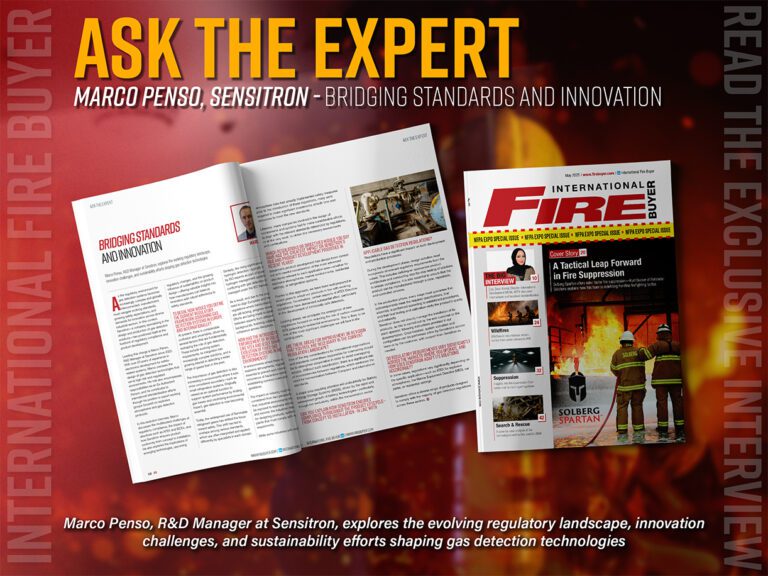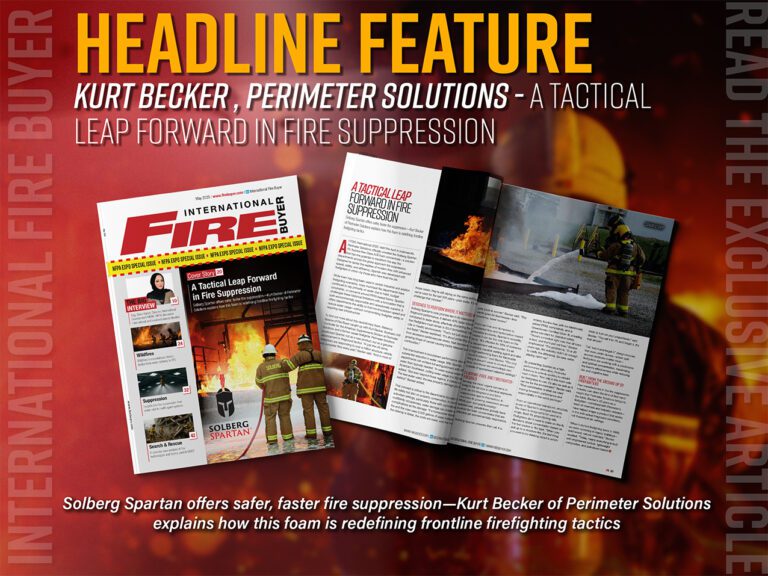Fire Buyer catches up with Fire Buyer Live speaker, Brent Brooks Specialist and Firefighting Captain at High Rise Firefighting to discover the key learning points for his session
You are a headline speaker at Fire Buyer Live, what can we expect from your session?
I plan on making a high energy presentation. Short clips from a city with 3000 high-rise buildings and two dedicated High-Rise Response Trucks. Most firefighters have never seen a “special tactic” used at a high-rise fire. I’ll demonstrate how special tactics are used and their outcomes, specifically the Bresnan Distributor nozzle being deployed off the roof of a high-rise building. Most fire departments are struggling to find a solution for buildings with a catastrophic failure above the 50th floor. We have a plan for that.
What knowledge and experience do you bring to the virtual event?
I am currently a Firefighting Captain assigned to the High-Rise Unit. I present and instruct hands-on training classes (H.O.T.) to our recruits and inservice crews. I have become a subject matter expert on “High-Rise Tactics” and issues related to large diameter hoses.
I have served on numerous committees and helped develop our Incident Management System (I.M.S.), training and RND for High-Rise Operations. I donate my time attending conferences, symposiums, and hands-on training internationally. I have spoken on complex building systems, help run the Canadian High-Rise Conference, initiated the High-Rise Round Table in Toronto and hosted the Toronto & Montreal High-Rise Summit. I am a member of the Council Of Tall Buildings based out of Chicago IL and represent Canada as a member of the T70 Tall Building Safety Committee based out of London, England.
I share information with Fire Departments from all over the world and have developed a network of experts in relation to high-rise firefighting. I instruct at the yearly high-rise operations conference (H.R.O.C.) in the USA and continue my education by attending four other firefighting conferences yearly.
You specialise in high rise firefighting, how does this differ to ‘typical firefighting’?
When firefighters respond to a high-rise fire, we arrive at the building’s address, not at the fire’s location. We still have to make our way aloft and find the fire floor and then the fire unit. (This would be equivalent to parking a city block away from a house on fire, then walking to it.) Tasks do not happen quickly in a high-rise building because of our vertical response time. The incident commander is in the blind as they cannot see the firefighting crews. The 360 size-up takes time to complete as some buildings cover an entire city block. The standpipe system and building’s fire pump(s) readiness are unknown, whereas our fire trucks are tested daily. Getting “water on the fire” is made worse if one of the building’s systems fail.
How does equipment/apparatus differ for tackling high rise building fires?
High-rise buildings are becoming taller with more complex layouts and systems. A standard fire truck is not capable of carrying all the equipment needed for these mixed use buildings. A fully staffed fire truck with high-rise specific equipment is helping our vertical city deal with fires more efficiently.
We have designed a new fire truck to help us solve 12 of the main problems as outlined in “High-Rise Firefighting”.
- Reaction Time
- Objects Falling From Heights
- Communications-Premises Security
- Complexity Of Internal Layout
- Water Supplies
- Physiological Demands and Physical Workload
- Failure of Electrical Systems-Casualty Retrieval
- Fire And Smoke Spread
- Effects of Wind-Catastrophic building system failures
To read more exclusive features and latest news please see our February issue here.
Media contact
Rebecca Morpeth Spayne,
Editor, International Fire Buyer
Tel: +44 (0) 1622 823 922
Email: [email protected]




































